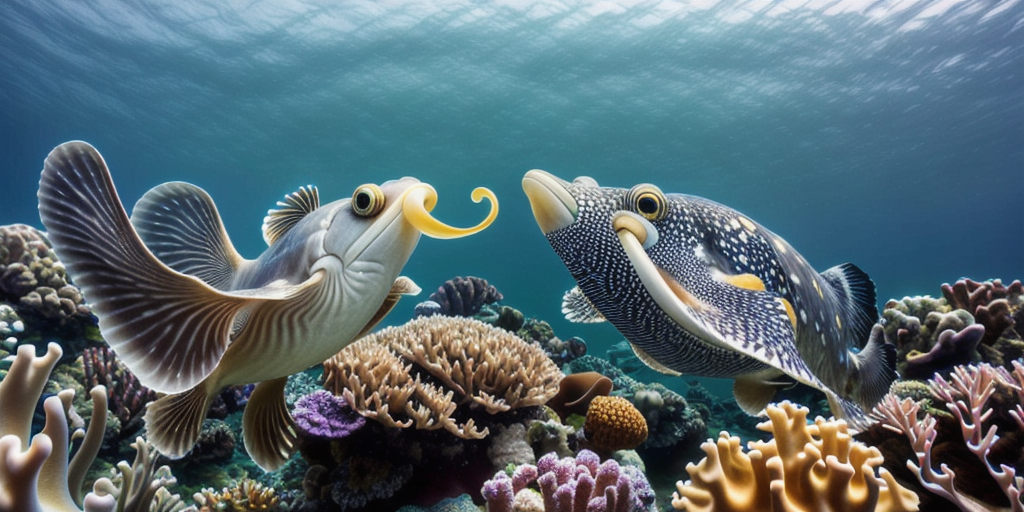
Possible evidence found of cuttlefish waving to each other as a form of communication
How did your country report this? Share your view in the comments.
Introduction:
The news topic “Possible evidence found of cuttlefish waving to each other as a form of communication” has drawn international attention, with various media outlets providing diverse insights, historical context, political stances, and on-the-ground developments. Below is a curated overview of how different countries and media organizations have covered this topic recently.
Quick Summary:
- Researchers from the École Normale Supérieure in Paris and the Italian Institute of Technology have identified specific arm gestures they’ve named “arm wave signs” The study, published this month in bioRxiv, reveals that these underwater signals can be perceived both visually and through water vibrations – essentially creating a multi-sensory conversation. Each movement involves different arm positions and undulating motions, often combined with color changes on the cuttlefish’s skin. The researchers found that these signals work through multiple sensory channels. They identified four distinct gestures they named ‘up,’ “side,” “roll,�” and “crown” signs.
- Researchers spotted cuttlefish waving to one another with their tentacles. The behavior pushes the boundaries of the creature’s intelligence. The researchers recorded videos of animals signing and played them back to the “cuttlefish participants,” who waved back at the displays. The team’s research is not yet peer-reviewed, and is hosted on the preprint server bioRxiv. “The most plausible interpretation is that these signs are symbolic and can encrypt a variety of possible meanings depending on the associated behavioral contexts,’” the team wrote. “In addition to their visually striking display, arm wave signs produce mechanical waves in the water, prompting us to researcher to use machine learning.”
Country-by-Country Breakdown:
Cuttlefish ‘Talk’ With Their Arms, Study Reveals
Researchers from the École Normale Supérieure in Paris and the Italian Institute of Technology have identified specific arm gestures they’ve named “arm wave signs” The study, published this month in bioRxiv, reveals that these underwater signals can be perceived both visually and through water vibrations – essentially creating a multi-sensory conversation. Each movement involves different arm positions and undulating motions, often combined with color changes on the cuttlefish’s skin. The researchers found that these signals work through multiple sensory channels. They identified four distinct gestures they named ‘up,’ “side,” “roll,�” and “crown” signs. Read full article
Cuttlefish Seem to ‘Wave’ at Each Other, but What They’re Saying Is a Mystery
Researchers spotted cuttlefish waving to one another with their tentacles. The behavior pushes the boundaries of the creature’s intelligence. The researchers recorded videos of animals signing and played them back to the “cuttlefish participants,” who waved back at the displays. The team’s research is not yet peer-reviewed, and is hosted on the preprint server bioRxiv. “The most plausible interpretation is that these signs are symbolic and can encrypt a variety of possible meanings depending on the associated behavioral contexts,’” the team wrote. “In addition to their visually striking display, arm wave signs produce mechanical waves in the water, prompting us to researcher to use machine learning.” Read full article
Cuttlefish May Communicate with Discolike Arm Gestures
Cuttlefish wave their expressive arms in four distinctive dancelike signals. The “up” sign involves cuttlefish extending one pair of their arms upward as if swim dancing to the Bee Gees song “Stayin’ Alive” For the “side’ sign, the animals bring all their arms to one side of their body or the other. The “roll” sign involvescuttlefish folding their arms beneath their head (maki) The scientists recently posted their observations in a paper on the preprint server bioRxiv.com. They have identified four arm-waving signs, which they call ‘up,’ ‘side,” “roll” and ‘crown’ Read full article
Watch cuttlefish ‘waving’ at each other in what scientists think might be communication
Cuttlefish appear to wave at each other in what researchers think could be a form of communication. The research team recorded videos of cuttlefish performing the movements and played them back. The researchers identified four “arm wave signs” — repeated sequences of arm undulations that could be combined to create particular patterns. They repeated the movements back at themselves significantly more when the video was in an upright configuration, as opposed to flipped upside down, suggesting the wave signs have significance when oriented correctly. The study has not yet been peer-reviewed, and the researchers didn’t determine what messages the arm waving conveyed to other cuttlefishes. It’s not known if the findings will be published in a peer-review journal.. The findings were published in the journal PLOS ONE, which is published by the Proceedings of the National Academy of Sciences. Read full article
Global Perspectives Summary:
Global media portray this story through varied cultural, economic, and political filters. While some focus on geopolitical ramifications, others highlight local impacts and human stories. Some nations frame the story around diplomatic tensions and international relations, while others examine domestic implications, public sentiment, or humanitarian concerns. This diversity of coverage reflects how national perspectives, media freedom, and journalistic priorities influence what the public learns about global events.
How did your country report this? Share your view in the comments.
Sources:
- Cuttlefish ‘Talk’ With Their Arms, Study Reveals
- Cuttlefish Seem to ‘Wave’ at Each Other, but What They’re Saying Is a Mystery
- Cuttlefish May Communicate with Discolike Arm Gestures
- Watch cuttlefish ‘waving’ at each other in what scientists think might be communication
Source: https://phys.org/news/2025-05-evidence-cuttlefish-communication.html


Психоаналитик это психотерапевт практикующий психоанализ Психолог психиатр психотерапевт и психоаналитик
145